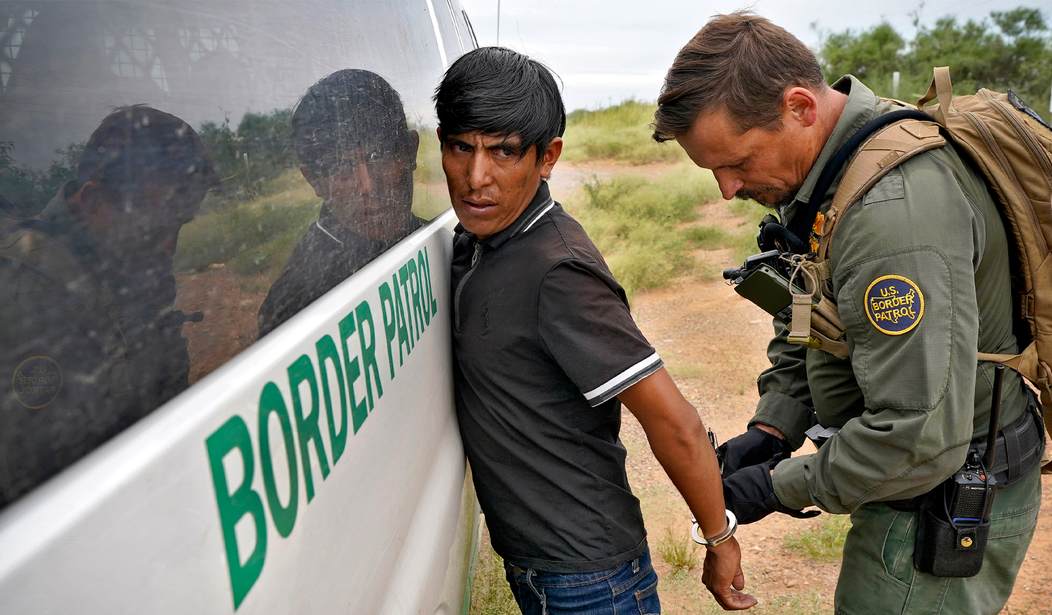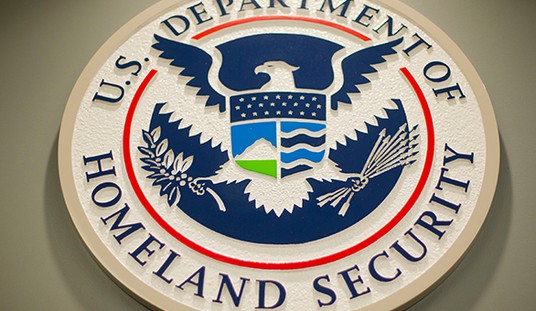It certainly has been an interesting few months along the United States’ southern border.
When one considers the Biden Administration’s non-existent border policies (and by that, I mean not “the Biden Administration’s non-existent border policies” but rather “the Biden Administration’s non-existent border” policies) it’s amazing it has taken this long for border state governors and even mayors to start taking things into their own hands. Look through these articles for some detailed reporting on that mess.
- Report: CBP Orders Agents From Ports of Entry to Assist Border Patrol
- CNN's Jim Acosta Can't Handle It When a Guest Says the Border Is 'Open'
- Biden Continues to Import as Many Illegals as He Can Get Away With, Breaks Multiple Records in August
- NY Gov. Hochul Deploys National Guard to Handle Illegal Aliens — by Helping Them Do Paperwork
- Shameful: 95-Year-Old Veteran and Others Booted From Nursing Home to Make Way for Illegal Aliens
But there’s a lot of history behind this mess. Three events gave the southern border the shape it has today, those being the Mexican War of 1846-1848, the Mexican Expedition of 1916 and 1917, and President Eisenhower’s non-PC-named Operation Wetback of 1954.
The Mexican War
Following the 1845 annexation of Texas into the United States, a problem arose, in that Mexico still considered Texas to be Mexican territory. Mexico refused to honor the Treaties of Velasco agreeing to Texan independence -- as those treaties were signed by Mexican President Antonio Lopez de Santa Anna when he was a prisoner of the Texan Army.’
Santa Anna, known by wags of the day as “The Immortal Three-Fourths” because of his wooden leg, returned to power in time to command the Mexican forces in 1846. As the war proceeded, U.S. forces invaded New Mexico, California, the Pacific Coast, and eventually Mexico itself. After General Winfield Scott’s forces captured Mexico City, the war was effectively ended and thus, the U.S. southern border took shape, essentially as it is today.
That was the beginning.
The Mexican Expedition
The next major event starts with a Mexican politician and general turned bandit leader named José Doroteo Arango Arámbula, more commonly known as Francisco “Pancho” Villa. In late 1915, the United States recognized Villa’s rival, one Venustiano Carranza, as the President of Mexico. Villa didn’t take this well and launched raids into American territory in reply. In early 1916, Villa’s forces executed 16 American miners in Chihuahua State and made noises about leading his forces into the U.S. In March of that year, Villa made good on his threat, invading the New Mexico Territory and burning the town of Columbus and the U.S. Army's Camp Furlong.
In reply, General John “Blackjack” Pershing, then at Fort Bliss, Texas, was ordered to assemble a force and pursue Pancho Villa into Mexico. This Pershing did with his usual aplomb, but the legitimate Mexican government amazingly objected and sent forces to meet the Americans.
In 1917, American forces returned to their own country, with Villa still not captured. But significantly, Villa retired in 1920, and he led no further raiding into the United States.
In later years John Pershing complained to his family and personal friends that the expeditionary force had failed to capture Villa because of excessive restrictions placed on his activities by the President, Woodrow Wilson.
That was the last actual incursion by American forces into Mexico.
Operation Wetback
Finally, we jump ahead to 1954. In that year, after a great deal of immigration – legal and illegal – from Mexico into the United States, the Eisenhower Administration initiated a major program to send illegal aliens back to their countries of origin, with that operation to be called “Operation Wetback.”
During the Second World War, the United States operated the “Bracero Program,” which allowed Mexican laborers into the country to work in agriculture and war industries, on the understanding that they would return home and that both countries were to cooperate on increasing security along the border. (Sound familiar?)
However, many Mexicans who were denied entry under the Bracero Program entered illegally, and many of those were employed in the agricultural sector, meaning they were spread widely across the United States. (My own father employed a Mexican family on his farm for two summers, 1951 and 1952.)
Between June 9 and September 18 of 1954, roughly a million illegal immigrants were deported under Operation Wetback. That was a follow-up to deportations that began under President Roosevelt and continued under President Truman, beginning in 1942 with 12,000 deported to almost 730,000 deported in 1952.
Meanwhile, the U.S. government was increasing the number of legal work permits for Mexicans to enter the United States; eventually, around two million Mexican citizens were allowed entry under the Bracero Program, which remained in place until 1964.
So, Where Are We Now?
That’s how we got to this point.
There is also, of course, one major aspect of the border mess that’s different, that being that most of the flood of people entering the United States illegally are not from Mexico, but rather points farther south. That is a significant difference indeed, as Mexico at least has a history of dealing with the U.S. on immigration issues, while countries like Venezuela do not. It’s a safe assumption that the governments of countries like Venezuela are glad of the safety valve tossing their citizens onto the road north offers.
In many ways, the situation along our southern border has degraded to what it was in 1915. We have roving bandits crossing the border with impunity. The current denizen of the White House seems befuddled about the whole thing and is unable to act in any meaningful way. The Border Patrol and the military are hamstrung. And border-state governors and even border-town mayors are growing angrier by the day, as are the governors and mayors of states and cities that are receiving the ever-more-numerous waves of overflow -- an overflow of people who are unscreened, un-vetted, and not even here legally in the first place. The stories linked at the beginning of this piece speak to those issues and more.
What actions are to be taken now?
There is no doubt that the Mexican cartels who control big swaths of the border could be taken out by a full-blown assault by the United States military, but let’s be honest, that’s not going to happen; even if the rank-and-file of the Army and Marine Corps were up to the task, the soft-shelled invertebrates commanding at the highest levels are not. There is no Blackjack Pershing around today to lead this effort.
A mass deportation, while it would largely solve the immediate problem and provide a great disincentive to future illegal aliens, probably won’t happen either. Our elected officials are great at talking a big game, but when it comes to acting, somehow that never seems to happen. There is no Harry Truman or Dwight Eisenhower in the offing who would be willing to order such an effort.
Only yesterday (Tuesday), my colleague Brandon Morse wrote eloquently about why so many men are today thinking of the fall of Rome:
The United States of America is a nation in decline, and what seems to be the mainstream reaction?
Bread and circuses.
One man was asked the Roman Empire question by his wife and he responded, as most men do, with a "yes," and then went into why he thinks about it, at least lately. He touches on the problem of how America's decline looks a lot like the Roman Empire's decline and makes some very scary comparisons.
Do you ever think of the Roman Empire?
— Wall Street Silver (@WallStreetSilv) September 25, 2023
🔊 pic.twitter.com/GUu2lDTo5T
It’s important to note that a big part of Rome’s downfall was due to an unchecked influx of people who were, even by the standards of that time, barbarians, and who were not interested in assimilating into Roman society. We are fast approaching just such a turn, and we have our own Venezuelan Ostrogoths, Chinese Goths, Somalian Thracians, and Ecuadorian Teutons already within the city walls. Is America’s fall coming?
We live, as the old Chinese curse states, in interesting times.
Editor's Note: This article was edited post-publication for clarity.














